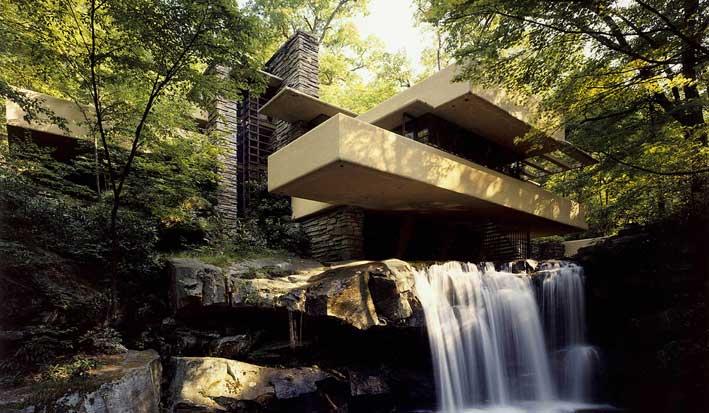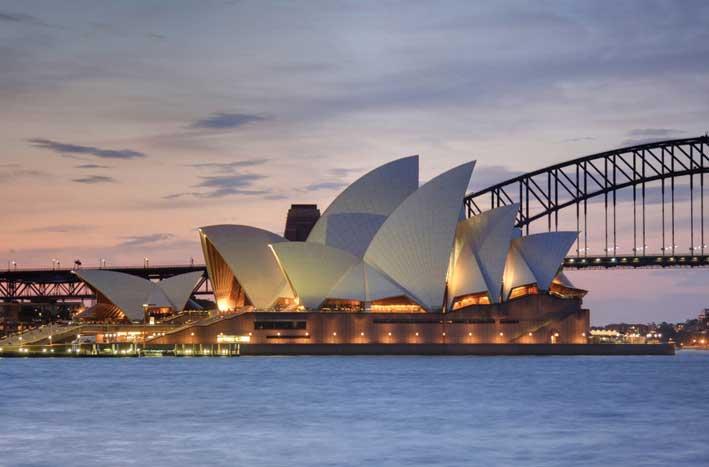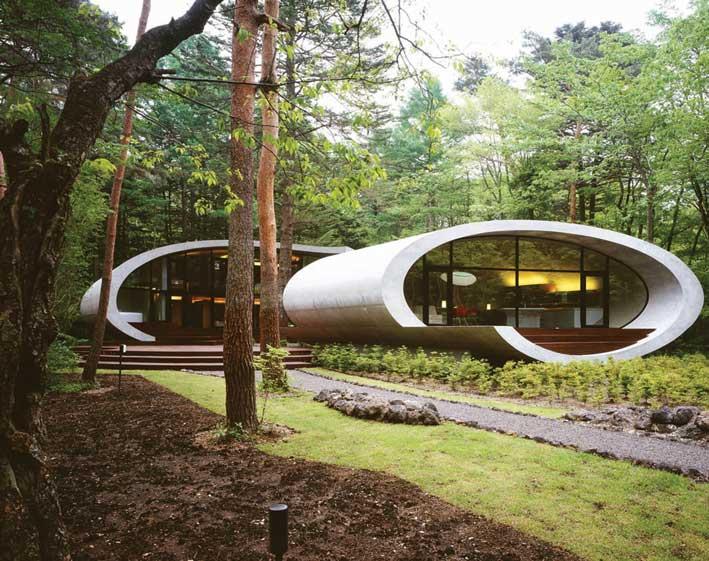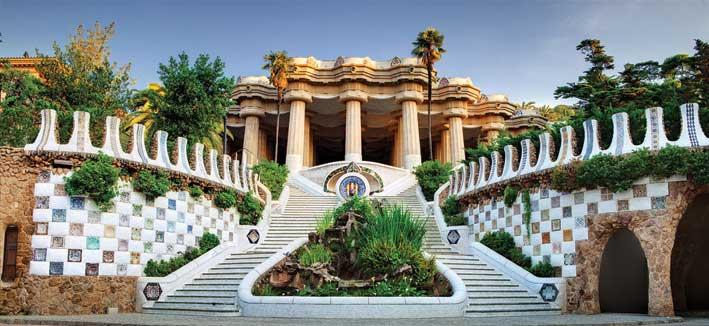The term was coined by Frank Lloyd Wright in the early 20th century and is broadly used to describe any building the shape of which mimics nature and harmonises with its natural environment. Organic architecture stems from an understanding that the wellbeing of the human psyche cannot be nurtured by removing people from the natural world in which they belong. To this end, organic buildings grow from the ground - as one with their site - while also providing occupants with a connection to the exterior. This kinship with the environment in Wright's words meant, for example, "not to build on top of a hill in dominance, but beside it in partnership".
Frank Lloyd Wright
Wright was born in 1867 in Wisconsin, USA, into a Unitarian, idiosyncratic teacher family. A set of wooden building blocks known as 'Froebel Gifts', a kindergarten gift from his mother, predetermined his career. He was later quoted as saying: "these cubes, spheres and triangles are in my fingers to this day." His creative period spanned over 70 years, during which he designed more than 1,000 diverse buildings of which 532 were completed. His colourful personal life often made the headlines for his affairs, various turbulent marriages and divorces and even a murder at his Taliesin studio in 1914.
Five examples of beautiful Organic Architecture
Organic Architecture is not a stylistic or aesthetic movement. Each building is a response to its site, the character of its occupants and the time in which it is designed. Because each of these conditions differs, each 'Organic' building is unique.

Biesbosch Museum
The Biesbosch Museum, located near the city of Dordrecht in the Netherlands, recently underwent a massive redesign which saw the island museum completely covered under a naturally-insulating grass blanket. The eight-month-long transformation also added an organic restaurant, an outdoor seating area and a new extension wing.
A rooftop walkway winds through the new grassy knolls and ends in a look-out point that allows visitors to admire one of the last extensive freshwater tidal wetlands in north-western Europe. De Biesbosch National Park is a haven for nature enthusiasts, bird-watchers, holiday-makers and photographers. Through a constant battle with and against water, flood protection and other design focuses let you discover up-close how man and nature can work together.
Location: Dordrecht, Netherlands.
Architect: Studio Marco Vermeulen.
Completed: 2015.

Fallingwater
It is impossible to not include Wright's classic of Organic Architecture in this non-inclusive list of his genre. Fallingwater in rural Pennsylvania, built in the late 1930s as a holiday home for the wealthy Kaufmann family, has often been described as 'the best all-time work of American architecture'.
This private residence is built on top of a waterfall and strongly reflects Wright's passion for Japanese architecture, particularly in the importance of interpenetrating exterior and interior spaces and the strong emphasis placed on harmony between man and nature. One example of this is a rock ledge, which used to be Kaufman's favourite sunning spot, protruding up to a foot through the living-room floor, left in place as it was.
Location: Pennsylvania, USA.
Architect: Frank Lloyd Wright.
Completed: 1939.

Sydney Opera House
In designing the Sydney Opera House, Danish architect Jørn Utzon took inspiration from many natural sources, including the harbour setting, headlands, palm leaves, shells, waves, ribs, clouds and even snow and ice. These offered the imprint of nature's organic forms, colours and textures that can be recognised in this remarkable example of organic architecture, or 'additive architecture', to use Utzon's term.
Constructed between 1959 and 1973, the building includes many features that are today recognised as hallmarks of sustainable design. As explained by Utzon himself: "By being in contact with our surroundings, we find our way into architecture's innermost being... The true innermost being of architecture can be compared with that of nature's seed."
Location: Sydney, Australia.
Architect: Jørn Utzon.
Completed: 1973.

Shell
Similar to Fallingwater, this holiday villa in Karuizawa, Japan, also fits perfectly into the surrounding woodlands, while at the same time echoing nature in its design. As the name suggests, the oval-shaped building is reminiscent of a shell.
According to the architects, "being in sync with nature isn't about yielding to nature - it's about coexistence. The existence of the structure depends on its power to endure nature. By isolating living space from the wilderness, and upgrading its quality as a shelter, the house will be protected from nature and will provide a comfortable environment. With this, the house will be taken care of and used frequently and continuously."
Location: Karuizawa, Japan.
Architect: ARTechnic.
Completed: 2008.

Parque Guell
This short list of organic architecture marvels would not be complete without Catalan architect Antoni Gaudi. He designed Park Guell, amongst many modern organic buildings that tend to escape lines and rigid geometry in favour of wavy lines and curved shapes underscored by new forms of concrete and cantilever trusses.
The public park is surrounded by an undulating mosaic wall and demonstrates Gaudi's high regard for nature. He used natural elements such as stones and recycled ceramics, rather than firing new ones. To avoid levelling the land, Gaudi designed meandering viaducts and, moreover, he planned the park to include numerous trees.
Location: Barcelona, Spain.
Architect: Antoni Gaudi.
Completed: 1926.